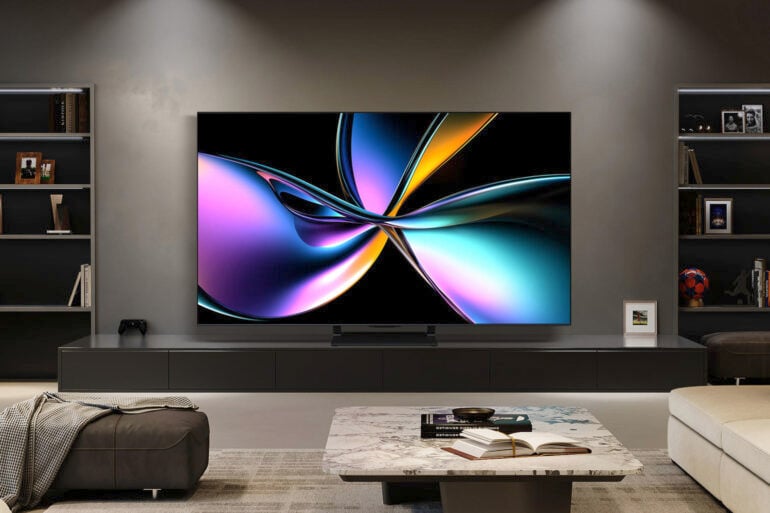
I’ve long considered Hisense’s U7 TVs as one of the better value picks for most people. Straddling the line between affordability and features, it’s a good TV that suits a lot of different types of media. With the U7QAU, Hisense has made some important improvements that make it even more versatile without sacrificing value for money.
Compared to the best TVs, the U7QAU isn’t as picture-perfect as some of the models that cost thousands of dollars more. It’s noticeably better than last year’s corresponding U7 TV, but a narrow viewing angle and light control challenges are still present.
A lot of those things are only noticeable if you know what to look for, however. During the day, these imperfections barely rate a mention. At nighttime, it’s a bit easier to nitpick here and there while watching movies. If you mainly watch sports or play video games, though, there’s very little to fault.
That particular use case happens to fit me to a tee. As someone who mainly uses a TV for sports and gaming, the Hisense U7QAU is ideal.
Table of contents
- Hisense U7QAU compared to the rest of the range
- Specifications and price
- Picture quality
- In full bloom
- A welcome HDMI upgrade for gamers
- Usability
- Who is the Hisense U7QAU for?
Hisense U7QAU compared to the rest of the range
To add a bit more context, it’s helpful to know what you do and don’t get depending on how much you spend. Hisense loaned me a 65-inch version of the U7QAU, which fetches a retail price of $2,399. That’s if you pay full price; you can always grab TVs for much cheaper during seasonal sales.
Above this model is the U8QAU, which costs $2,999 for the 65-inch model. Below is the $1,899 U6QAU Pro. All of them use Mini LED backlight technology, consisting of thousands of tiny backlights capable of producing high brightness levels. Where they differ is how bright they get, how many dimming zones each TV has, and the inclusion (or omission) of other premium features.
I consider brightness and dimming zones among the most important aspects of Mini LED TVs. Anti-glare technology is usually reserved for high-end TVs, like Samsung’s fancy QN990F model. So, the best way for cheaper TVs can combat glare from sunlight or indoor lights is to crank up the brightness.
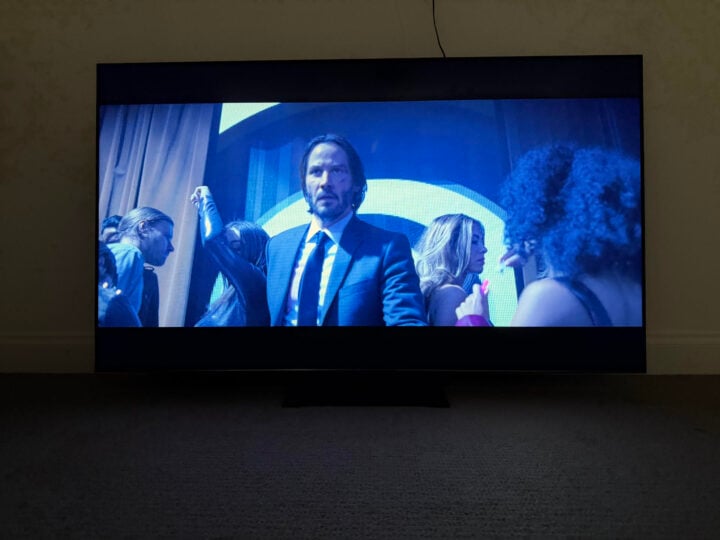
But brighter images need good light control; otherwise, you get blooming, a halo-like effect where light bleeds into the darker parts of a picture. Unlike OLED technology, which lights up each pixel individually, Mini LED relies on dimming zones, controlling its backlights in batches. Put simply, the more dimming zones, the more precisely a TV can control its picture, reducing the impact of blooming.
When upgrading this year’s TVs, Hisense gave the 65-inch U7QAU 560 dimming zones, an increase from 300 in last year’s U7NAU model. That’s still well shy of the U8QAU’s 3,000+ dimming zones, and the 1,000 dimming zones of last year’s U8NAU.
I’ll get into more of why that matters later, but it partly shows the different market for each TV: the U8 series is for enthusiasts who want precise, bright pictures without paying OLED prices, while the U7 fits the bill for people who want a bright, high-refresh rate TV but don’t need pixel-perfect precision for movies and TV shows.
Hisense U7QAU TV specifications and price
| Size reviewed | Three-year manufacturer’s warranty |
| Sizes available | 55, 65, 75, 85, and 100-inch |
| Display resolution | 3840 x 2160 (4K) |
| Refresh rate | 165Hz |
| Backlight technology | Mini LED |
| Operating system | VIDAA U9 |
| HDR format | HDR10 HDR10+ Adaptive Dolby Vision IQ |
| Audio format | Dolby Atmos compatible 2.1.2-channel built-in speakers |
| Inputs | 4x HDMI 2.1 ports Ethernet 2x USB 2.0 / USB 3.0 (A-type) Headphone in Composite in RF input Optical audio Wi-Fi 5 (802.11 a/b/g/n/ac) Bluetooth 5.0 Apple AirPlay 2 |
| Price (RRP) | $2,399 (65-inch) |
| Warranty | Three years manufacturer’s warranty |
| Australian website | Hisense Australia |
Picture quality
Like the previous U7 TVs I’ve tested, the Hisense U7QAU defaults to a reasonably vibrant colour profile by default. A lot of people like that, but I prefer a more muted, true-to-life look. It means a bit of tinkering in the settings, but nothing too laborious.
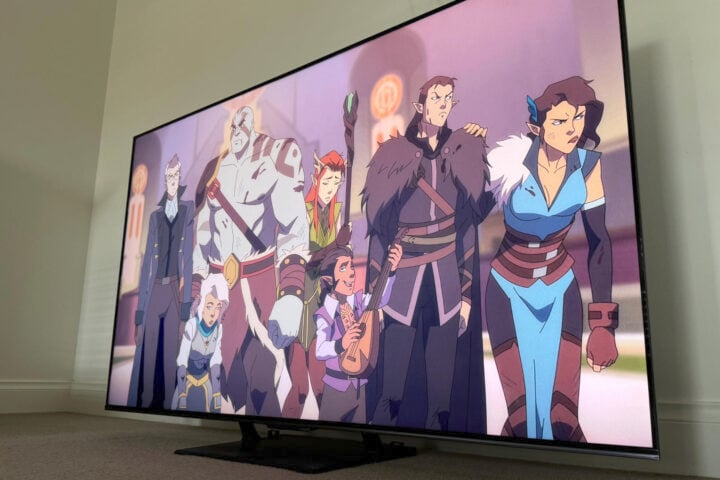
There’s no doubting that this TV is plenty bright enough for most homes. Hisense advertises a peak brightness of 2,400 nits; to the naked eye, it looks like the backlights are being put to good use.
Depending on your living room situation, you’ll likely want to crank up the brightness during the day, because the U7QAU panel catches a bit of glare. That’s fairly common among mid-range TVs, so consider this an FYI more than an outright criticism.
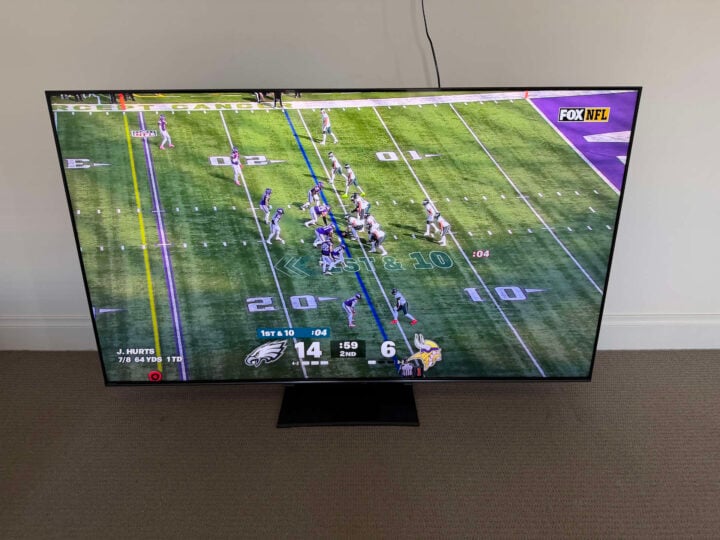
Watching sports and playing video games on this TV works a treat. That’s not just because of the max 165Hz refresh rate — I tend to disable any motion smoothing by default — but I also like a big, bright picture to help pick out the details on a football field or where opponents are during online gaming sessions.
In full bloom
Like last year’s U7 TV, the Hisense U7QAU mainly shows its flaws when watching movies or TV shows. Particularly at night or in a dim room, the limited dimming zones lead to some blooming issues.
I think it’s improved compared to the U7NAU, though. Letterboxed content retains its black levels at the top and bottom fairly well, even during fast-moving scenes where the bright parts of the image rapidly change.
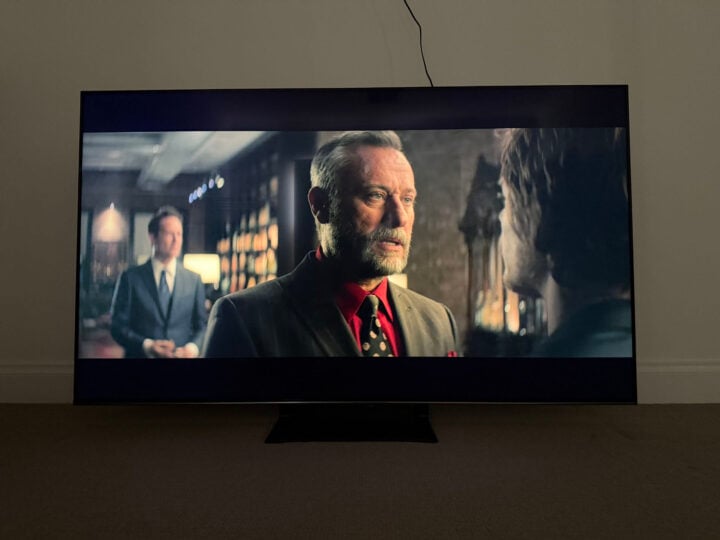
Most of the TV’s shortcomings are more obvious when viewed off-centre. Like its predecessor, the Hisense U7QAU has a narrow optimal viewing angle. As soon as you start looking from off-centre, the blooming becomes more pronounced. You also lose colour accuracy, washing out the image, the closer to side-on your angle is.
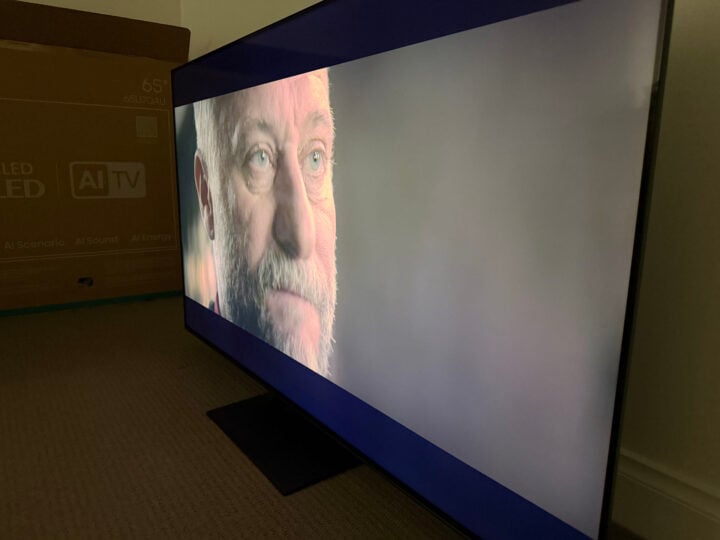
That’s not so bad for solo viewing, where you’re guaranteed prime position. With a crowd, however, anyone sitting off to the side will get a sub-optimal experience.
What surprised me, however, was the U7QAU’s internal speaker system. Equipped with a built-in 2.1.2 sound system, the TV produces clear dialogue and avoids the tinny sound that plagues a lot of internal TV speakers.
Despite the volume and relative oomph behind the audio, there’s still not much bass to speak of. You won’t get room-shaking cinematic rumbles during action scenes, not without a soundbar, at least. But as far as built-in speakers go, the U7QAU is a clear year-on-year improvement.
A welcome HDMI upgrade for gamers
I like to think that Hisense heard my pleas in recent years and made all four HDMI ports the 2.1 standard. Previously, there were only two HDMI 2.1 ports, including one dedicated to eARC connectivity with a soundbar.
For multi-video game console households (like mine), that used to mean only one 4K 120Hz-compatible console could be plugged in alongside a soundbar at a time. Alternatively, one could connect a console to each HDMI 2.1 port and then forgo the high-quality eARC connection for the soundbar. Some soundbars support HDMI passthrough, but they tend to be on the pricier end of the scale.
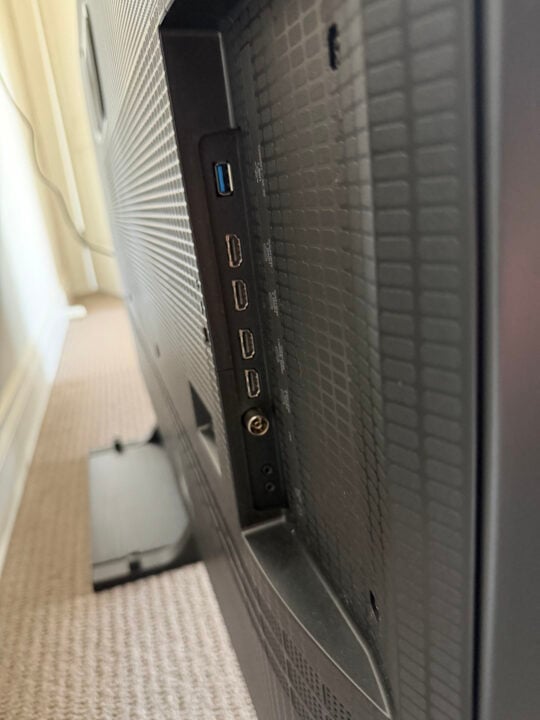
With the Nintendo Switch 2 arriving on the scene earlier in the year, there are now three mainstream consoles that support 120Hz gaming. So, I’m relieved the U7QAU has four HDMI 2.1, letting my Switch 2, PlayStation 5 Pro, Xbox Series X, and soundbar can all take full advantage of their respective features.
Supporting variable refresh rate (VRR) and AMD FreeSync Premium Pro technology, the U7QAU looks crisp while gaming. I didn’t notice any stutters or screen tearing, so no complaints here. Oddly, the Switch 2 doesn’t currently support VRR while docked, but that’s on Nintendo, not Hisense.
Usability
Here in Australia, Hisense uses the VIDAA operating system, unlike the Google TV OS used in the US. As far as TV operating systems go, it’s functional and responsive, which sounds like a low bar to clear, but you’d be surprised how poorly some TVs handle. It’s a bit riddled with ads, though, like every other TV OS.
I’m well served by the built-in AirPlay 2 support, but Android users aren’t as lucky. There’s no Google Cast support, but at least the U7QAU supports Google Home for those with an established smart home ecosystem. At least for Apple users like me, it’s easy to cast videos and media from a phone to the big screen.
You also have the option of using the VIDAA phone app as a remote control. I only used the app for the TV setup, which saved me from slowly entering all the settings using the physical remote. However, it requires creating an account, so keep that in mind. Had I not already made an account from a few years ago, I might not have bothered adding to my increasing pile of random accounts I look at once a year.
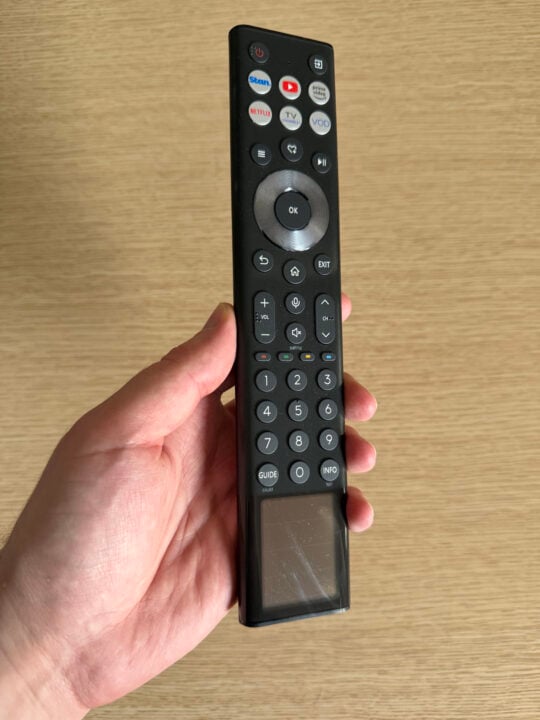
But in better news, Hisense’s solar-powered remote is delightful. The company made the change last year, and I’m glad they’ve stuck with it. While some TV companies opt for quirky designs or fiddly motion controls, this remote is the Paul’s Smarter White Milk of remotes: it just works like a real remote.
I thought it was an unusually tall remote at first, but that’ only because of the solar panel located on the bottom. As long as you grip the device partway up, reaching every button is pretty easy.
And there are a lot of buttons. Hisense still includes a full array of number keys, in addition to quick access to inputs, popular streaming apps, and anything you’ve assigned to your favourites. It might sound like a minor thing, but every button feels tactile and easy to press. I’m still burned by previous LG Magic Remotes that stash some buttons in a weird concave recess. Just keep ‘em flat, like Hisense does, and I’m a happy man.
Who is the Hisense U7QAU for?
Remaining one of the better affordable mid-range TVs in Australia, the Hisense U7QAU once again shines as a sports-watching and gaming TV. Now with full HDMI 2.1 support across four inputs, this TV is all the more viable for multi-console households.
Its plentiful support of streaming apps lends it to movie and TV watching, as long as you can contend with blooming during dim scenes.
Hisense may list the retail price at $2,399 for the 65-inch model, but plenty of retailers sell the TV for less than $1,700. Its imperfections quickly fade away when you can get such a feature-rich TV for so much cheaper than the next tier up.
The post Hisense U7QAU 4K TV review: A bright Mini LED improver appeared first on GadgetGuy.



0 (mga) komento:
Mag-post ng isang Komento